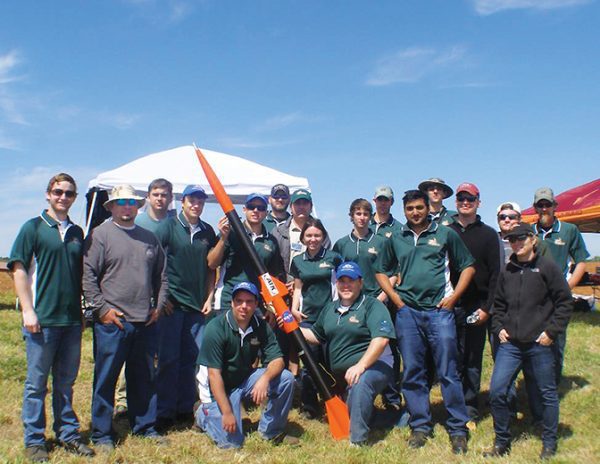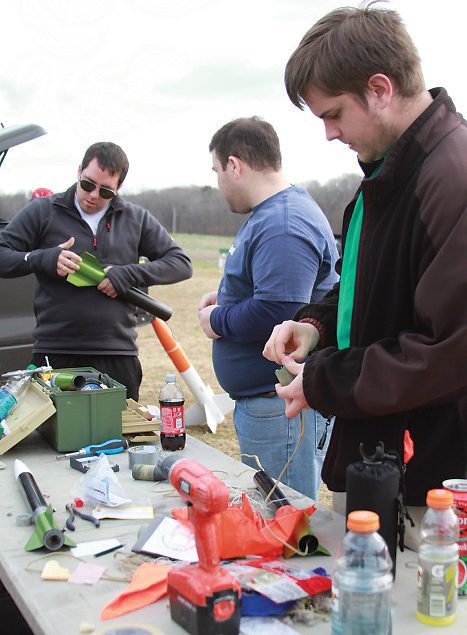Rocket Team Soaring to New Heights

In its second year, the 49er Rocket team has soared to new heights in a number of ways, even though a final launch engine failure at a recent event led to a crash and burn. That’s rockets, and that’s how you learn from rockets.
Systems Engineering senior Nathan Muller has been involved with the group for the past two years. “It started because a few guys really liked rockets,” he said. “They made a proposal to design and build an entry for the 2012 NASA/USLI competition as their senior design project. Their proposal was accepted and the rocket team was born.”
The official name of the group is the 49er Rocketry and Projectile Society. Its stated purpose is to bring both engineering and non-engineering students together to discuss, design, implement and fly high power rockets. The organization works hand in hand with the Lee College of Engineering’s Senior Design NASA University Student Launch Initiative team.
 The group’s regular meetings involve discussions about design and then hands-on construction of all rocket and payload components. They learn to use composite materials such as fiberglass and carbon fiber, and learn the ins and outs of rocket flight simulation techniques. Several times a semester the club travels to local rocket launch sites to fly their high-powered rockets and learn from what others are doing.
The group’s regular meetings involve discussions about design and then hands-on construction of all rocket and payload components. They learn to use composite materials such as fiberglass and carbon fiber, and learn the ins and outs of rocket flight simulation techniques. Several times a semester the club travels to local rocket launch sites to fly their high-powered rockets and learn from what others are doing.
The first senior design rocket team did well at the NASA/USLI competition in Huntsville, Alabama, finishing 13th.
“The 2012 group did great and we’re continuing on their path,” Muller said. “We started working on our rocket back in August with eight senior design students and 10 club members. We were motivated by our love for rockets and the challenge of improving on last year’s team.”
Through the NASA/USLI program university teams compete to construct a vehicle that can reach an altitude of one mile. For 2013, teams also had to integrate a means of separation via renewable resources, be able to collect and then transmit SMD and strain data during flight, and store descent imaging.
The 49er team took 18 people to the five-day competition at Marshall Space Flight Center in Huntsville. Thursday and Friday they toured NASA facilities and had Rocket Fair, where all the teams showed off their hard work to NASA employees and contractors. Saturday was supposed to be the first launch day, but that was scrubbed because of muddy conditions. So Sunday became the only flying day.
“We started setting up at the field at 5 a.m. Sunday,” Muller said. “We ran through our checklists for parts, tools and procedures on assembly to make sure everything was perfect.”
The team stood together as the announcer counted down the launch. The rocket launched, but unfortunately shortly after the motor exploded, destroying the carbon fiber fin can and casing.
 “The team was really let down because it was something that we had no control over,” Muller said. “NASA had required us to use the Cesaroni K-740 motor, which we found out later was recently recalled for being defective.”
“The team was really let down because it was something that we had no control over,” Muller said. “NASA had required us to use the Cesaroni K-740 motor, which we found out later was recently recalled for being defective.”
The club will push on and next year’s teams will learn from this year’s.
We want to transfer our knowledge to the guys coming up,” said Umar Faraz, president of the rocket club and a member of the 2013 team. “We hope they will keep making improvements. Two members from this year’s team and two from the 2012 team will be mentoring the 2014 team. And we already have the team lined up for the 2015 competition.”